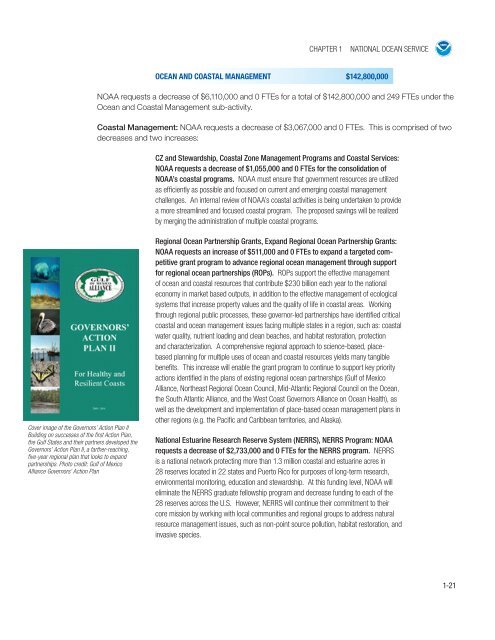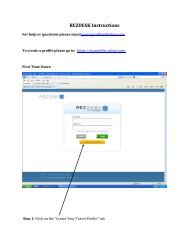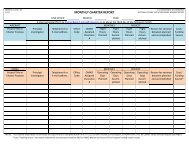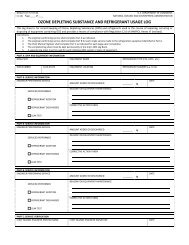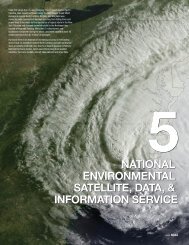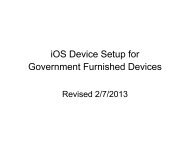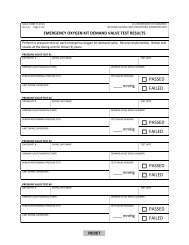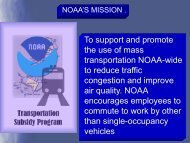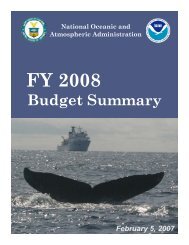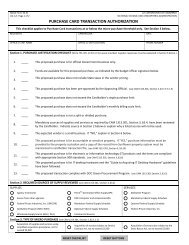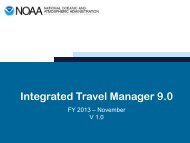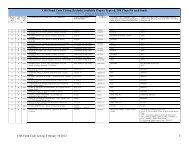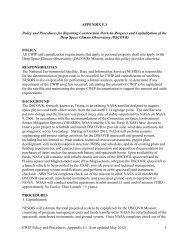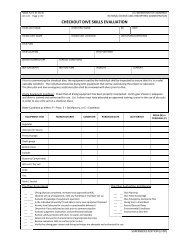Chapter 1 - NOAA
Chapter 1 - NOAA
Chapter 1 - NOAA
Create successful ePaper yourself
Turn your PDF publications into a flip-book with our unique Google optimized e-Paper software.
CHAPTER 1<br />
NATIONAL OCEAN SERVICE<br />
OCEAN AND COASTAL MANAGEMENT $142,800,000<br />
<strong>NOAA</strong> requests a decrease of $6,110,000 and 0 FTEs for a total of $142,800,000 and 249 FTEs under the<br />
Ocean and Coastal Management sub-activity.<br />
Coastal Management: <strong>NOAA</strong> requests a decrease of $3,067,000 and 0 FTEs. This is comprised of two<br />
decreases and two increases:<br />
CZ and Stewardship, Coastal Zone Management Programs and Coastal Services:<br />
<strong>NOAA</strong> requests a decrease of $1,055,000 and 0 FTEs for the consolidation of<br />
<strong>NOAA</strong>’s coastal programs. <strong>NOAA</strong> must ensure that government resources are utilized<br />
as efficiently as possible and focused on current and emerging coastal management<br />
challenges. An internal review of <strong>NOAA</strong>’s coastal activities is being undertaken to provide<br />
a more streamlined and focused coastal program. The proposed savings will be realized<br />
by merging the administration of multiple coastal programs.<br />
Cover image of the Governors’ Action Plan II<br />
Building on successes of the first Action Plan,<br />
the Gulf States and their partners developed the<br />
Governors’ Action Plan II, a farther-reaching,<br />
five-year regional plan that looks to expand<br />
partnerships. Photo credit: Gulf of Mexico<br />
Alliance Governors’ Action Plan<br />
Regional Ocean Partnership Grants, Expand Regional Ocean Partnership Grants:<br />
<strong>NOAA</strong> requests an increase of $511,000 and 0 FTEs to expand a targeted competitive<br />
grant program to advance regional ocean management through support<br />
for regional ocean partnerships (ROPs). ROPs support the effective management<br />
of ocean and coastal resources that contribute $230 billion each year to the national<br />
economy in market based outputs, in addition to the effective management of ecological<br />
systems that increase property values and the quality of life in coastal areas. Working<br />
through regional public processes, these governor-led partnerships have identified critical<br />
coastal and ocean management issues facing multiple states in a region, such as: coastal<br />
water quality, nutrient loading and clean beaches, and habitat restoration, protection<br />
and characterization. A comprehensive regional approach to science-based, placebased<br />
planning for multiple uses of ocean and coastal resources yields many tangible<br />
benefits. This increase will enable the grant program to continue to support key priority<br />
actions identified in the plans of existing regional ocean partnerships (Gulf of Mexico<br />
Alliance, Northeast Regional Ocean Council, Mid-Atlantic Regional Council on the Ocean,<br />
the South Atlantic Alliance, and the West Coast Governors Alliance on Ocean Health), as<br />
well as the development and implementation of place-based ocean management plans in<br />
other regions (e.g. the Pacific and Caribbean territories, and Alaska).<br />
National Estuarine Research Reserve System (NERRS), NERRS Program: <strong>NOAA</strong><br />
requests a decrease of $2,733,000 and 0 FTEs for the NERRS program. NERRS<br />
is a national network protecting more than 1.3 million coastal and estuarine acres in<br />
28 reserves located in 22 states and Puerto Rico for purposes of long-term research,<br />
environmental monitoring, education and stewardship. At this funding level, <strong>NOAA</strong> will<br />
eliminate the NERRS graduate fellowship program and decrease funding to each of the<br />
28 reserves across the U.S. However, NERRS will continue their commitment to their<br />
core mission by working with local communities and regional groups to address natural<br />
resource management issues, such as non-point source pollution, habitat restoration, and<br />
invasive species.<br />
1-21


